High Aspect Ratio Nanoimprint Mold-Cavity Filling and Stress Simulation Based on Finite-Element Analysis
Abstract
:1. Introduction
2. Simulation Models
3. Results and Discussion
3.1. Mold-Cavity-Filling Analysis
3.2. Von Mises Stress Analysis
3.3. Comparison among Different Molds
4. Conclusions
Acknowledgments
Author Contributions
Conflicts of Interest
References
- Karlsson, M.; Forsberg, P.; Nikolajeff, F. From hydrophilic to superhydrophobic: Fabrication of micrometer-sized nail-head-shaped pillars in diamond. Langmuir 2010, 26, 889–893. [Google Scholar] [CrossRef] [PubMed]
- Hosomi, K.; Kikawa, T.; Goto, S.; Yamada, H.; Katsuyama, T.; Arakawa, Y. Ultra high-aspect-ratio SiO2 deeply etched periodic structures with smooth surfaces for photonics applications. J. Vac. Sci. Technol. B 2006, 24, 1226–1229. [Google Scholar] [CrossRef]
- Goldberger, J.; Hochbaum, A.I.; Fan, R.; Yang, P. Silicon vertically integrated nanowire field effect transistors. Nano Lett. 2006, 6, 973–977. [Google Scholar] [CrossRef]
- Cui, Y.; Wei, Q.; Park, H.; Lieber, C.M. Nanowire nanosensors for highly sensitive and selective detection of biological and chemical species. Science 2001, 293, 1289–1292. [Google Scholar] [CrossRef] [PubMed]
- Zhang, M.; Deng, Q.; Shi, L.; Cao, A.; Pang, H.; Hu, S. Fabrication of high aspect ratio (>100:1) nanopillar array based on thiol-ene. Microelectron. Eng. 2016, 149, 52–56. [Google Scholar] [CrossRef]
- Karlsson, M.; Vartianen, I.; Kuittinen, M.; Nikolajeff, F. Fabrication of sub-micron high aspect ratio diamond structures with nanoimprint lithography. Microelectron. Eng. 2010, 87, 2077–2080. [Google Scholar] [CrossRef]
- Messerschmidt, M.; Schleunitz, A.; Spreu, C.; Werner, T.; Vogler, M.; Reuther, F.; Bertz, A.; Schift, H.; Grützner, G. Thermal nanoimprint resist for the fabrication of high-aspect-ratio patterns. Microelectron. Eng. 2012, 98, 107–111. [Google Scholar] [CrossRef]
- Byeon, K.-J.; Cho, J.-Y.; Jo, H.-B.; Lee, H. Fabrication of high-brightness GaN-based light-emitting diodes viathermal nanoimprinting of ZnO-nanoparticle-dispersed resin. Appl. Surf. Sci. 2015, 346, 354–360. [Google Scholar] [CrossRef]
- Muhammad, R.; Cho, S.-H.; Lee, J.-H.; Park, J.-G. Fluorocarbon film-assisted fabrication of a CoNi mold with high aspect ratio for nanoimprint lithography. Microelectron. Eng. 2013, 104, 58–63. [Google Scholar] [CrossRef]
- Konishi, T.; Kikuta, H.; Kawata, H.; Hirai, Y. Multi-layered resist process in nanoimprint lithography for high aspect ratio pattern. Microelectron. Eng. 2006, 83, 869–872. [Google Scholar] [CrossRef]
- Kitagawa, T.; Nakamura, N.; Kawata, H.; Hirai, Y. A novel template-release method for low-defect nanoimprint lithography. Microelectron. Eng. 2014, 123, 65–72. [Google Scholar] [CrossRef]
- Hirai, Y.; Onishi, Y.; Tanabe, T.; Nishihata, M.; Iwasaki, T.; Kawata, H.; Lriye, Y. Time dependent analysis of the resist deformation in thermal nanoimprint. J. Vac. Sci. Technol. B 2007, 25, 2341–2345. [Google Scholar] [CrossRef]
- Hsueh, C.-H.; Lee, S.; Lin, H.-Y.; Chen, L.-S.; Wang, W.-H. Analyses of mechanical failure in nanoimprint processes. Mater. Sci. Eng. A 2006, 433, 316–322. [Google Scholar] [CrossRef]
- Lan, S.; Lee, H.-J.; Lee, S.-H.; Ni, J.; Lai, X.; Lee, H.-W.; Song, J.-H.; Lee, M.G. Experimental and numerical study on the viscoelastic property of polycarbonate near glass transition temperature for micro thermal imprint process. Mater. Des. 2009, 30, 3879–3884. [Google Scholar] [CrossRef]
- Yin, Z.; Sun, L.; Cheng, E.; Zou, H. Numerical study on the de-molding behavior of 2D PMMA nanochannles during hot embossing process. Microsyst. Technol. 2016, 22, 129–135. [Google Scholar] [CrossRef]
- Kim, N.W.; Kim, K.W.; Sin, H.-C. Finite element analysis of low temperature thermal nanoimprint lithography using a viscoelastic model. Microelectron. Eng. 2008, 85, 1858–1865. [Google Scholar] [CrossRef]
- Rowland, H.D.; King, W.P. Polymer deformation and filling modes during microembossing. J. Micromech. Microeng. 2004, 14, 1625–1632. [Google Scholar] [CrossRef]
- Wang, H.; Xie, H.; Li, Y.; Fang, P.; Dai, X.; Wu, L.; Tang, M. Fabrication of high temperature moiré grating and its application. Opt. Lasers Eng. 2014, 54, 255–262. [Google Scholar] [CrossRef]
- Liu, D.S.; Tsai, C.Y.; Lu, Y.T.; Sung, C.K.; Chung, C.L. Finite element method investigation into nanoimprinting of aluminum/polyimide bi-layer substrates. Microelectron. Eng. 2010, 87, 2361–2367. [Google Scholar] [CrossRef]
- Maruf, S.H.; Li, Z.; Yoshimura, J.A.; Xiao, J.; Greenberg, A.R.; Ding, Y. Influence of nanoimprint lithography on membrane structure and performance. Polymer 2015, 69, 129–137. [Google Scholar] [CrossRef]
- Sonne, M.R.; Smistrup, K.; Hannibal, M.; Thorborg, J.; Nørregaard, J.; Hattel, J.H. Modeling and simulation of the deformation process of PTFE flexible stamps for nanoimprint lithography on curved surfaces. J. Mater. Process. Technol. 2015, 216, 418–429. [Google Scholar] [CrossRef]
- Hirai, Y.; Yoshida, S.; Takagi, N. Defect analysis in thermal nanoimprint lithography. J. Vac. Sci. Technol. B 2003, 21, 2765–2770. [Google Scholar] [CrossRef]
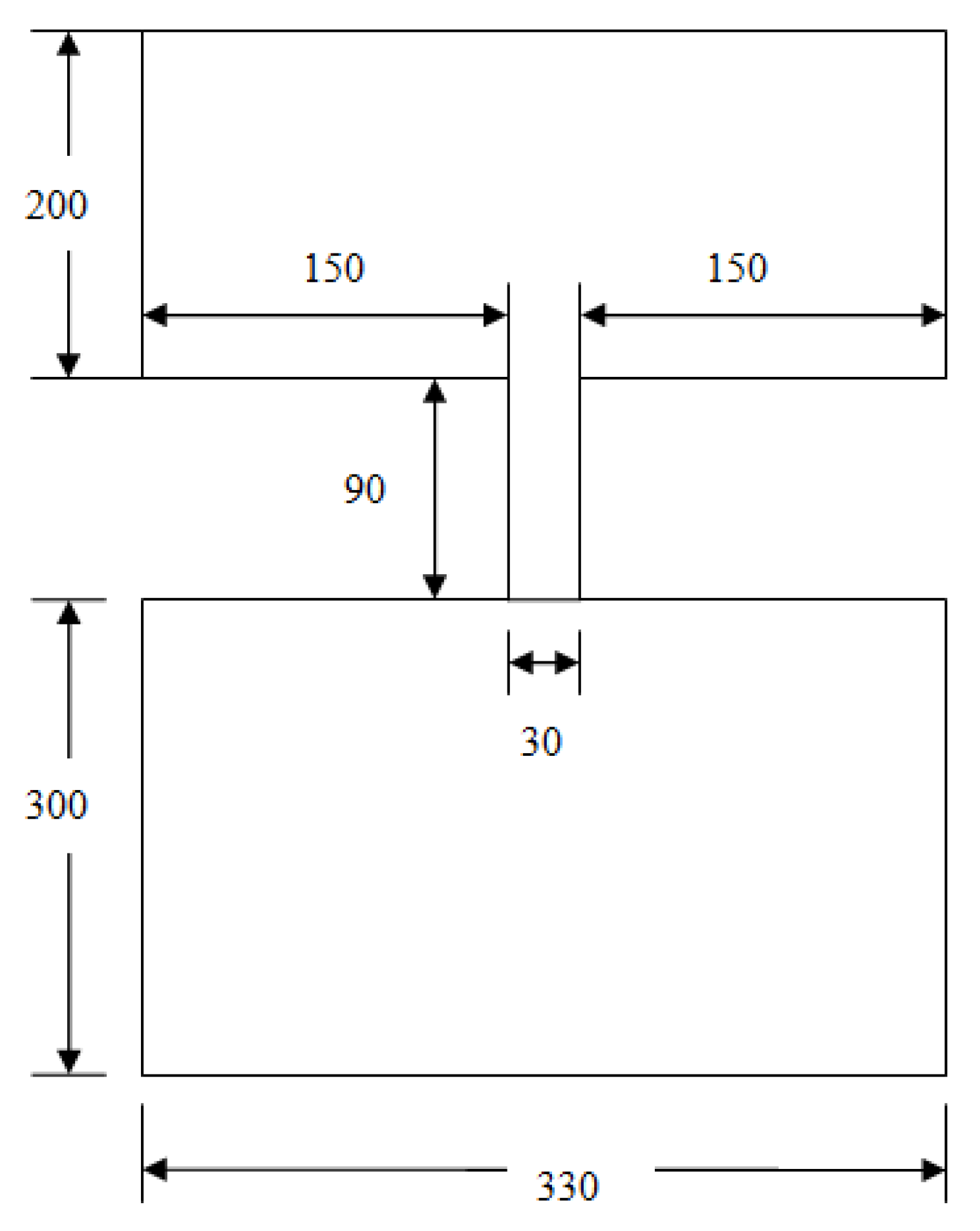
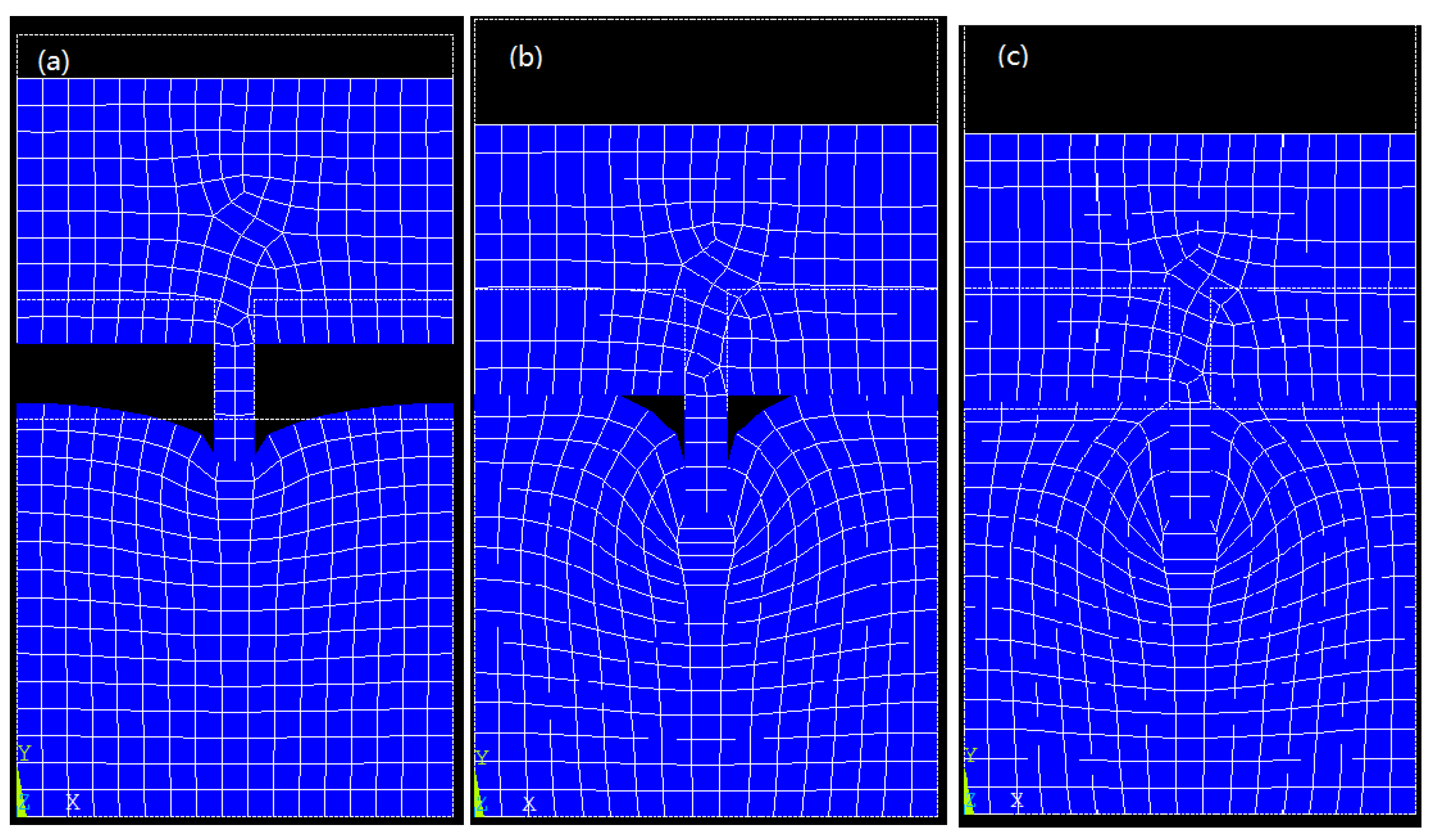
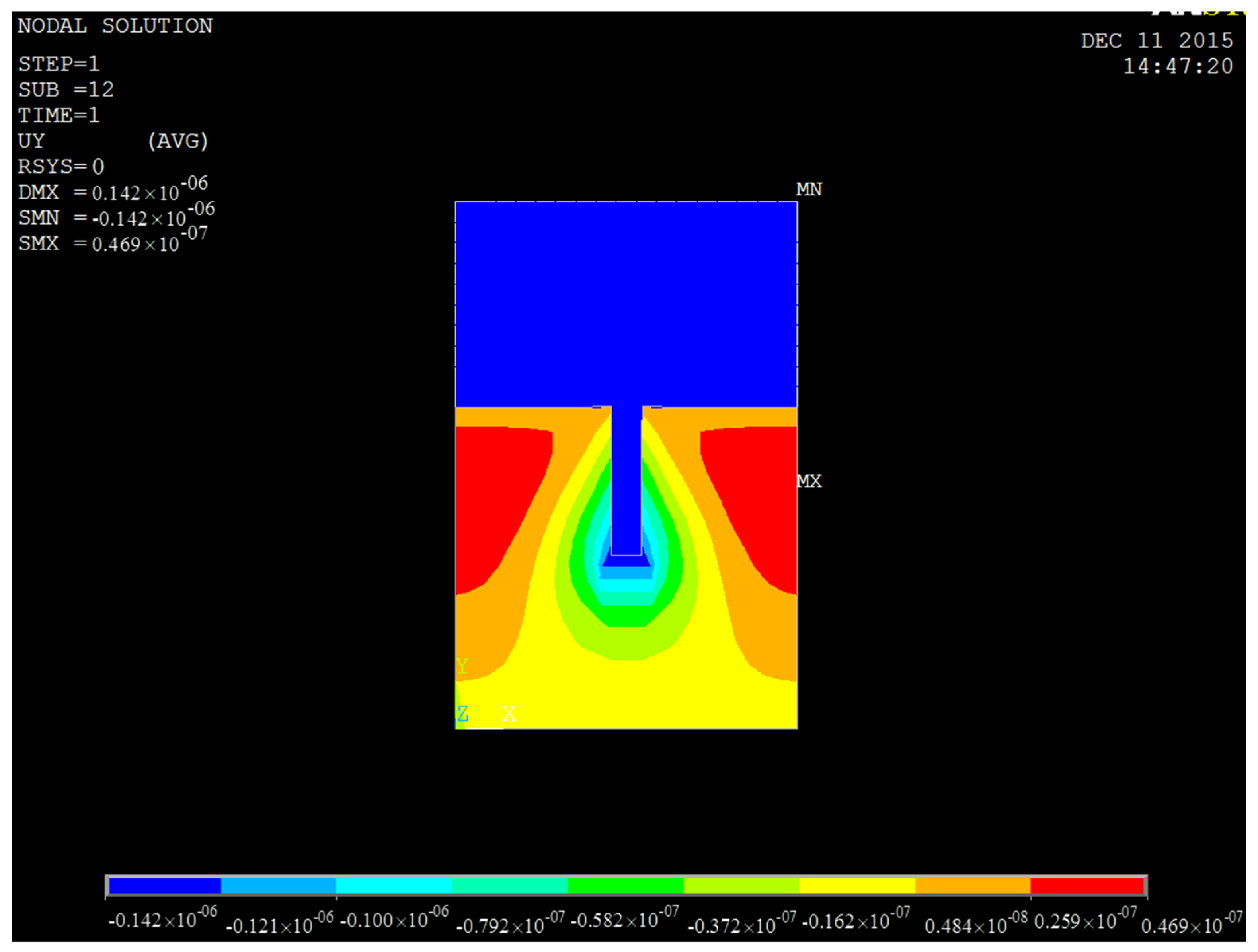
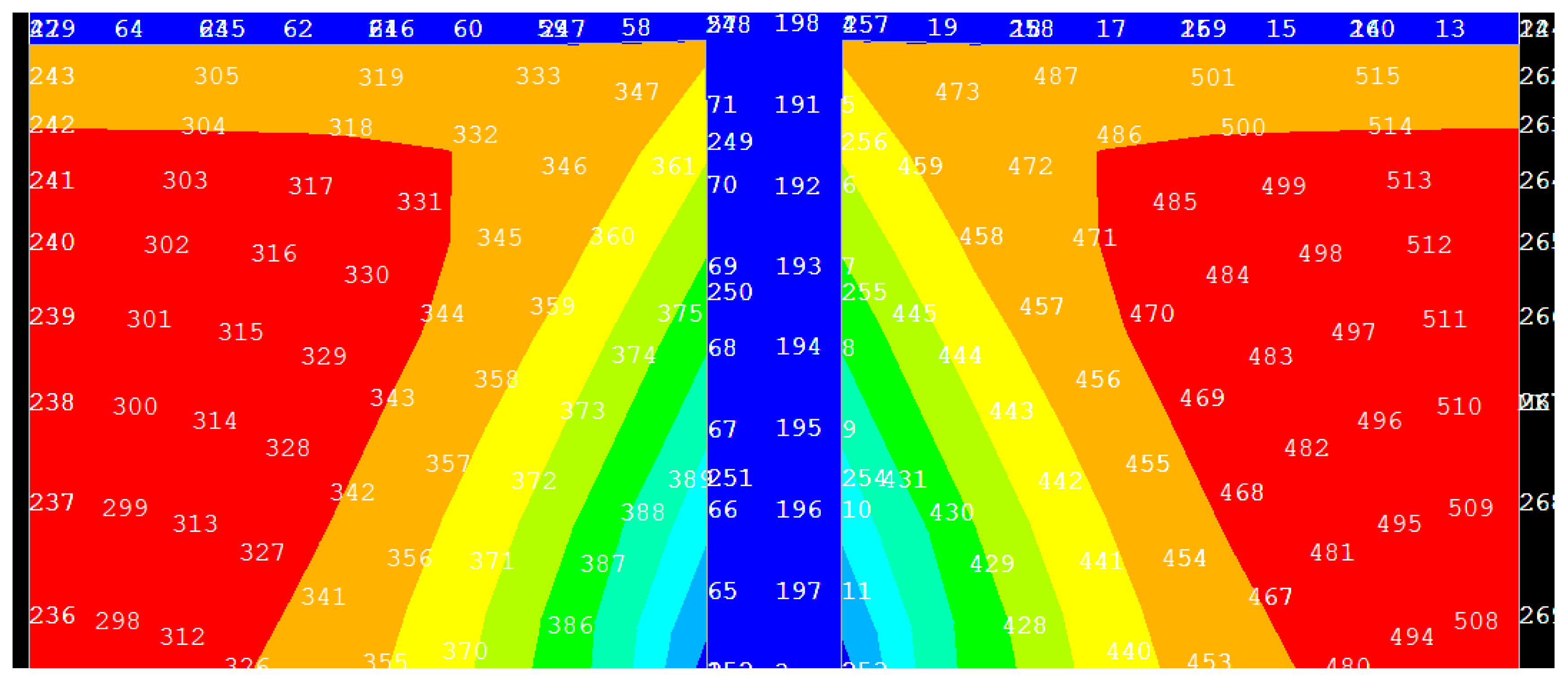
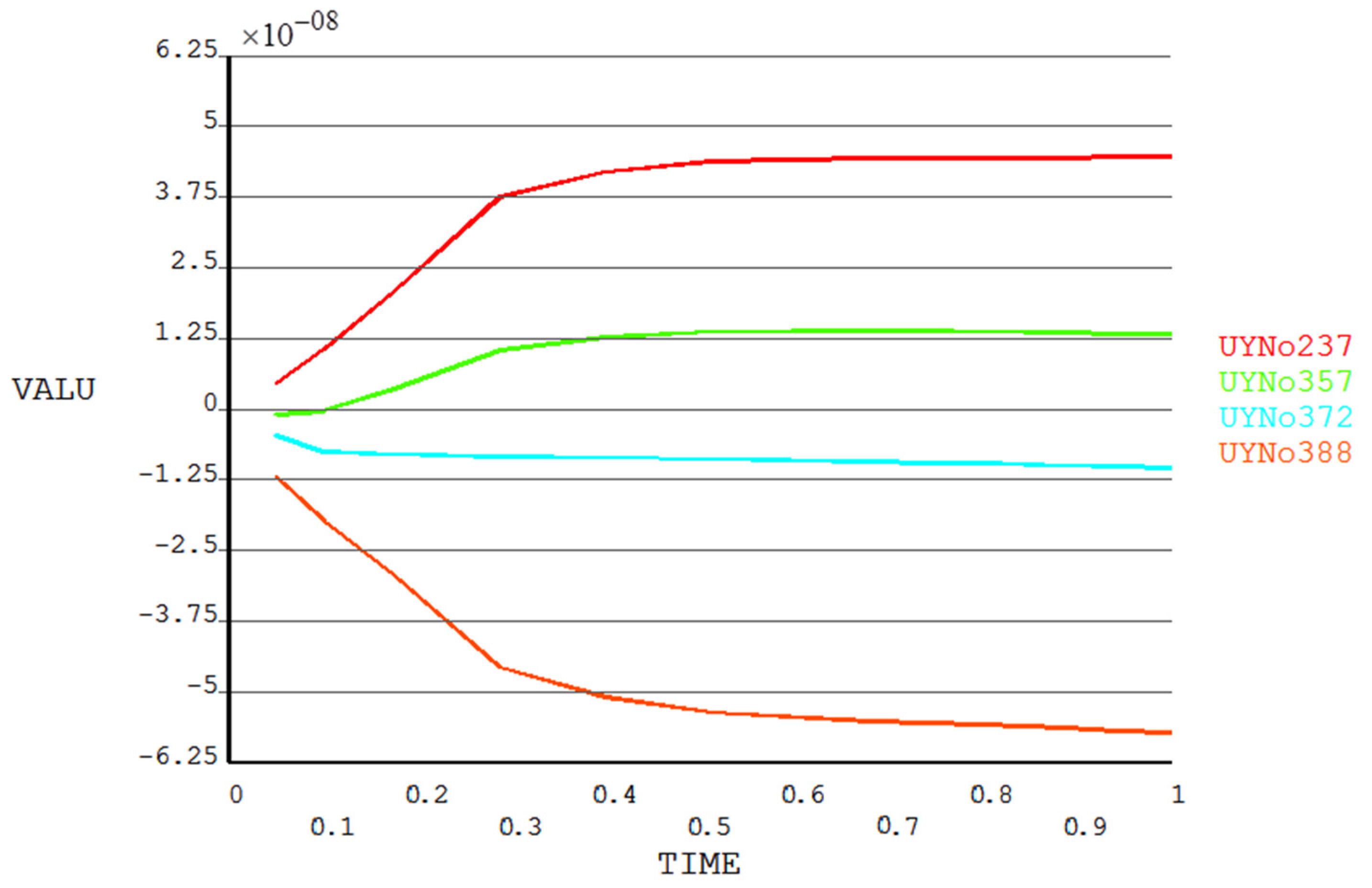
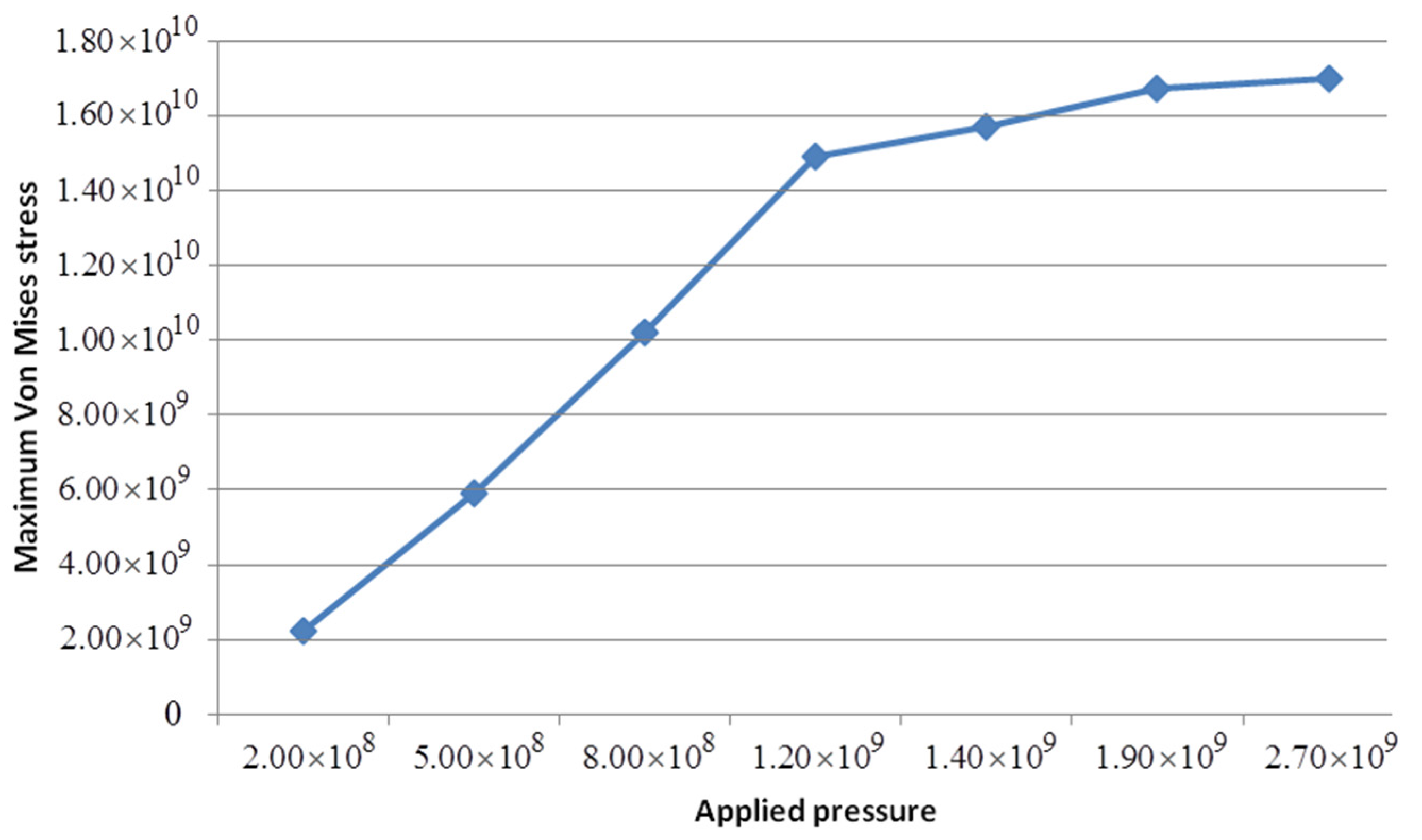
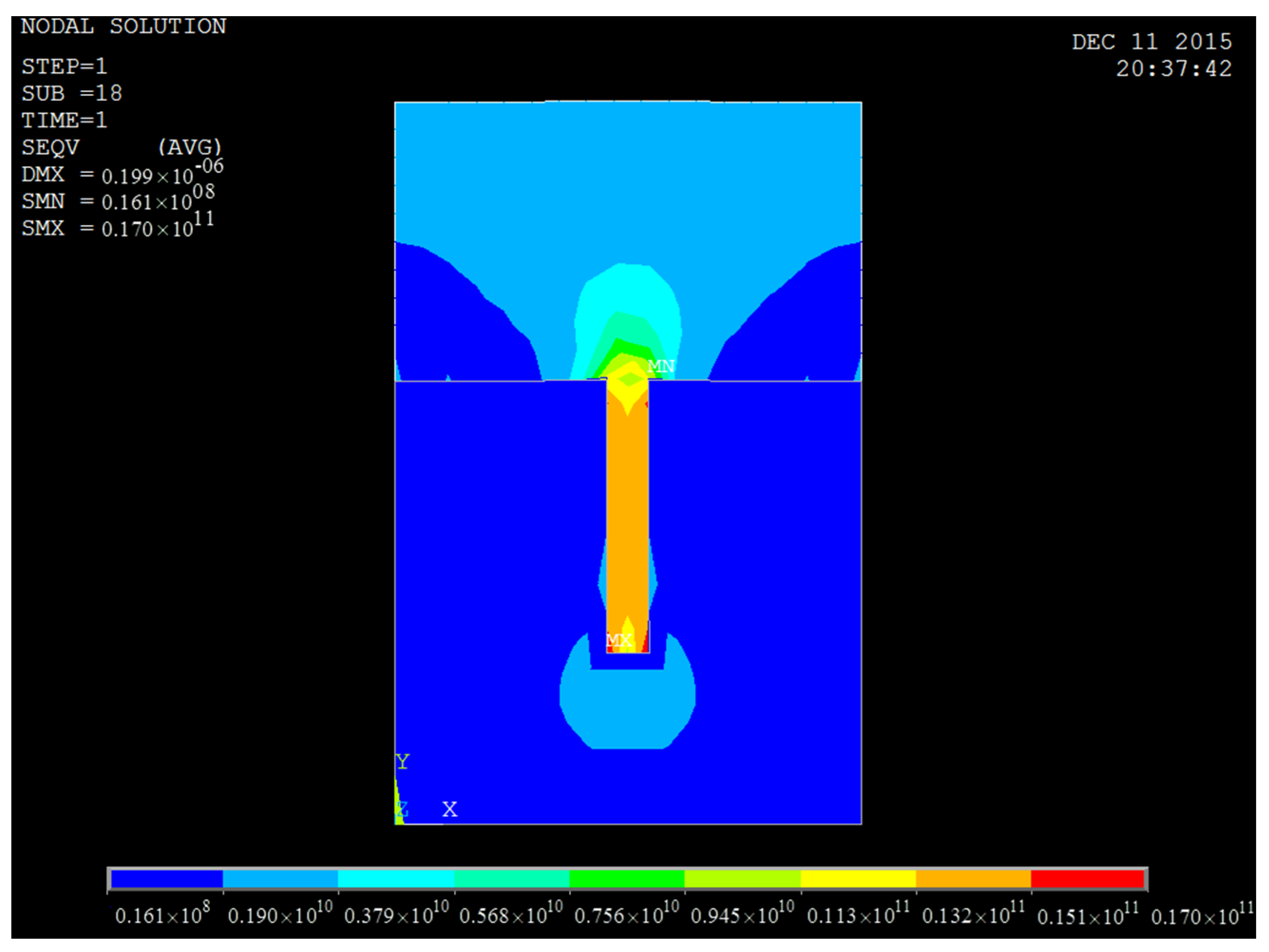
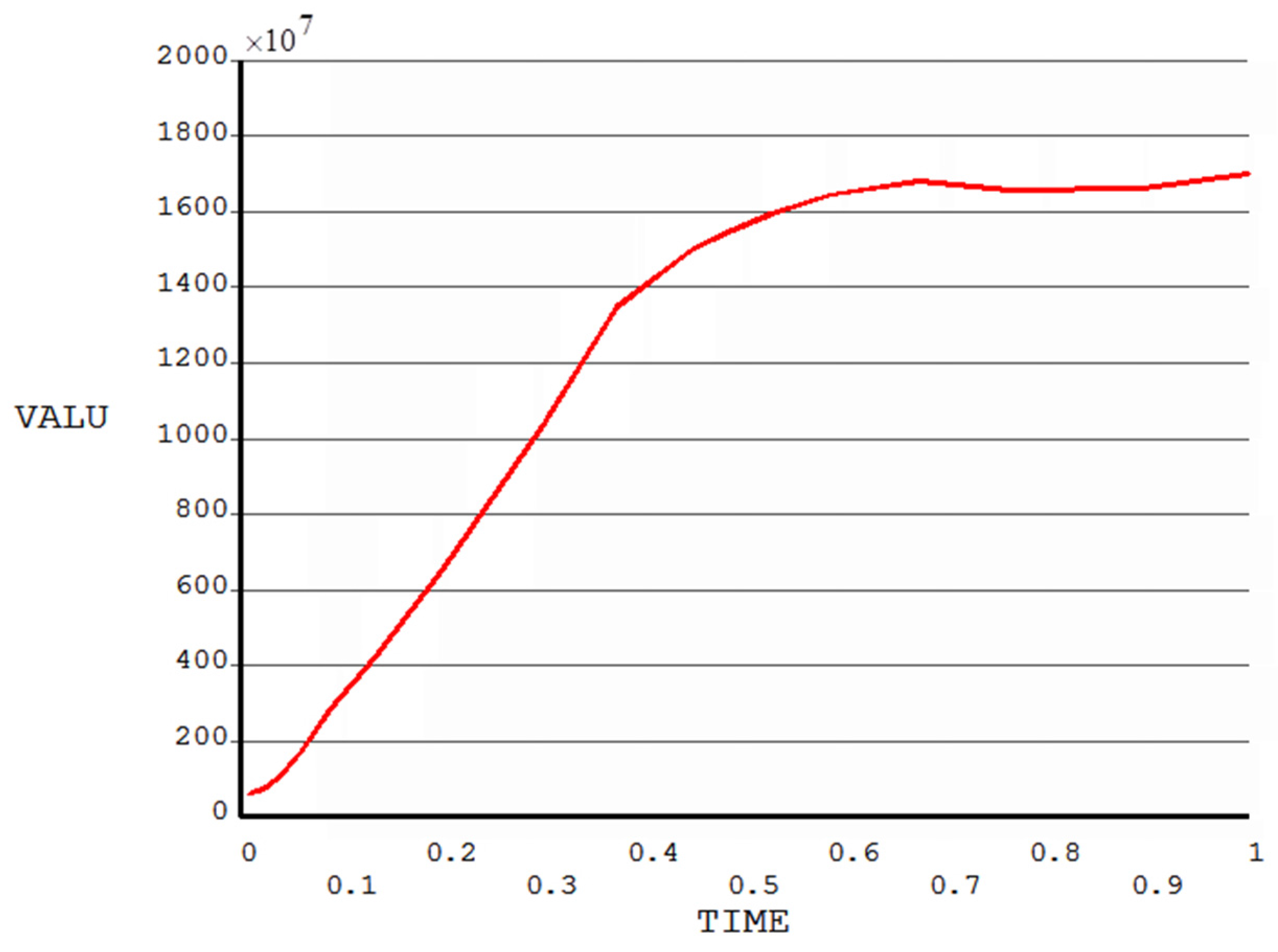
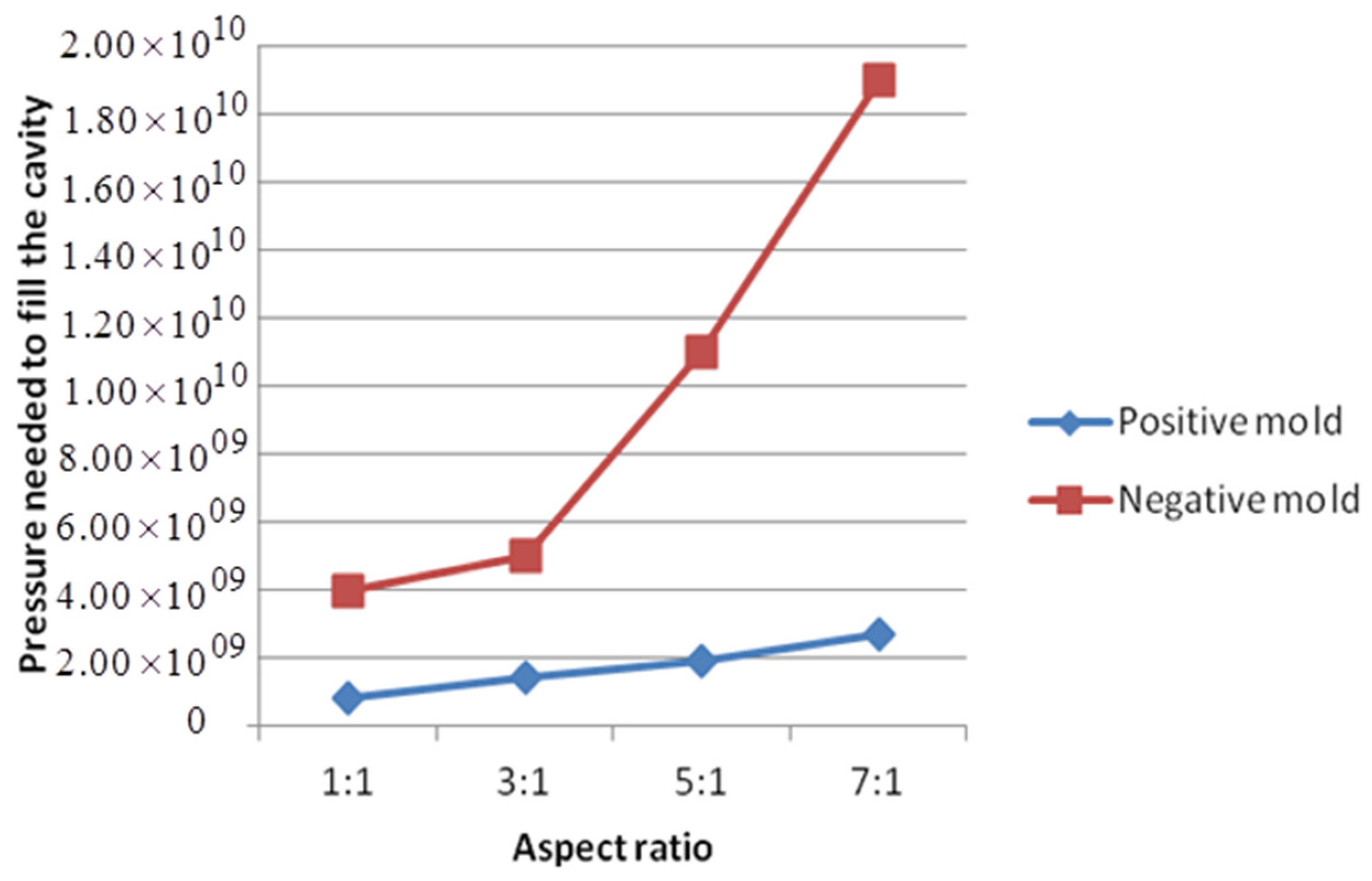
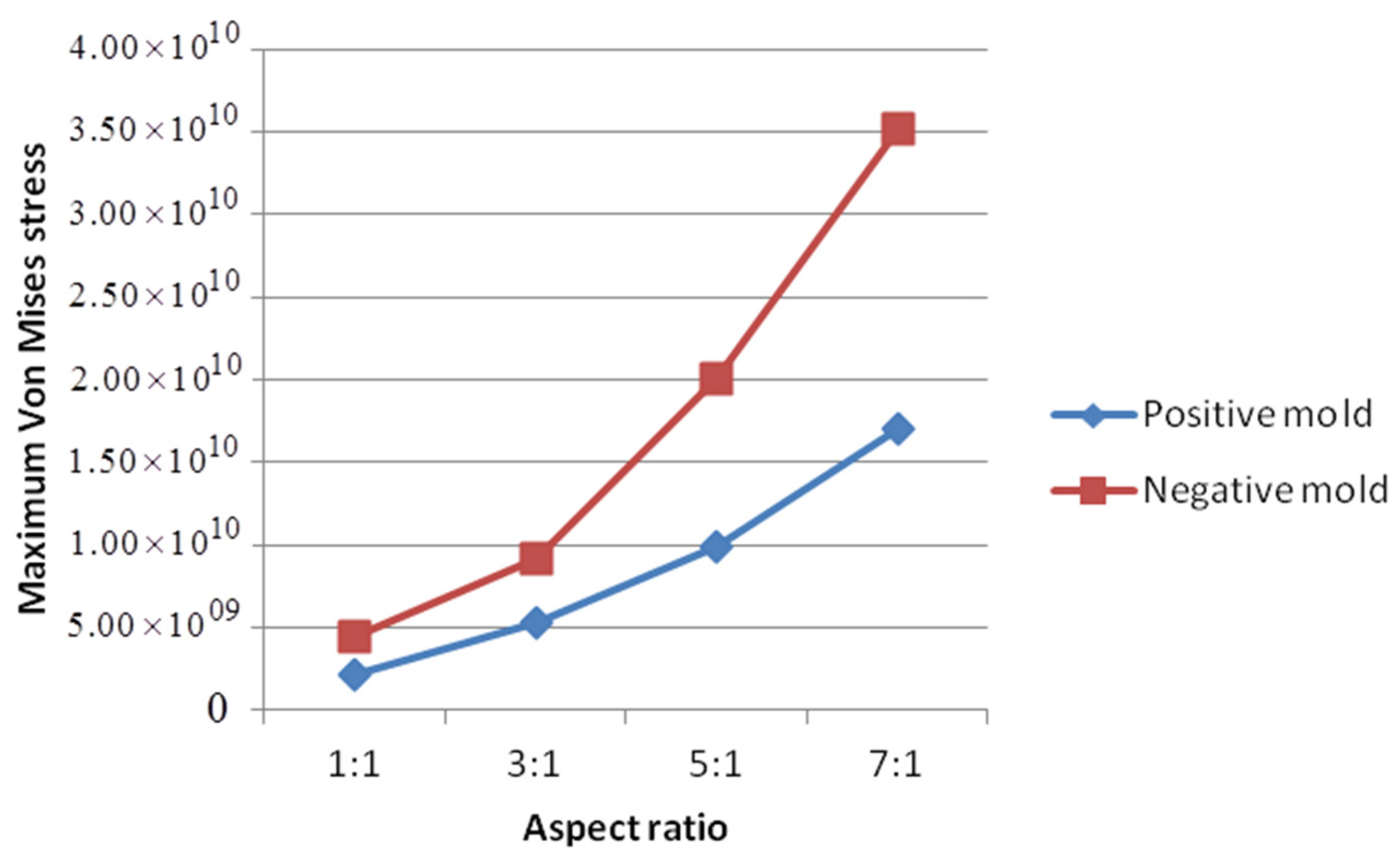
| Materials | Elastic Modulus (GPa) | Poisson’s Ratio | Density (kg/m3) | Thermal Conductivity Coefficient | Specific Heat Capacity (J/kg) |
|---|---|---|---|---|---|
| Si | 190 | 0.300 | 2330 | 149.00 | 700 |
| PMMA | 3 | 0.499 | 1190 | 0.21 | 1465 |
| Applied pressure | 2.0 × 108 | 5.0 × 108 | 8.0 × 108 | 1.2 × 109 | 1.4 × 109 | 1.9 × 109 | 2.7 × 109 |
| Maximum stress | 2.24 × 109 | 5.92 × 109 | 1.02 × 1010 | 1.49 × 1010 | 1.57 × 1010 | 1.67 × 1010 | 1.70 × 1010 |
| Aspect Ratio | 1:1 | 3:1 | 5:1 | 7:1 |
|---|---|---|---|---|
| Positive mold | 8 × 108 | 1.4 × 109 | 1.9 × 109 | 2.7 × 109 |
| Negative mold | 4 × 109 | 5.0 × 109 | 1.1 × 1010 | 1.9 × 1010 |
| Aspect Ratio | 1:1 | 3:1 | 5:1 | 7:1 |
|---|---|---|---|---|
| Positive mold | 2.10 × 109 | 5.25 × 109 | 9.87 × 109 | 1.70 × 1010 |
| Negative mold | 4.44 × 109 | 9.21 × 109 | 2.00 × 1010 | 3.51 × 1010 |
© 2017 by the authors. Licensee MDPI, Basel, Switzerland. This article is an open access article distributed under the terms and conditions of the Creative Commons Attribution (CC BY) license (http://creativecommons.org/licenses/by/4.0/).
Share and Cite
Sun, H.; Yin, M.; Wang, H. High Aspect Ratio Nanoimprint Mold-Cavity Filling and Stress Simulation Based on Finite-Element Analysis. Micromachines 2017, 8, 243. https://doi.org/10.3390/mi8080243
Sun H, Yin M, Wang H. High Aspect Ratio Nanoimprint Mold-Cavity Filling and Stress Simulation Based on Finite-Element Analysis. Micromachines. 2017; 8(8):243. https://doi.org/10.3390/mi8080243
Chicago/Turabian StyleSun, Hongwen, Minqi Yin, and Haibin Wang. 2017. "High Aspect Ratio Nanoimprint Mold-Cavity Filling and Stress Simulation Based on Finite-Element Analysis" Micromachines 8, no. 8: 243. https://doi.org/10.3390/mi8080243




